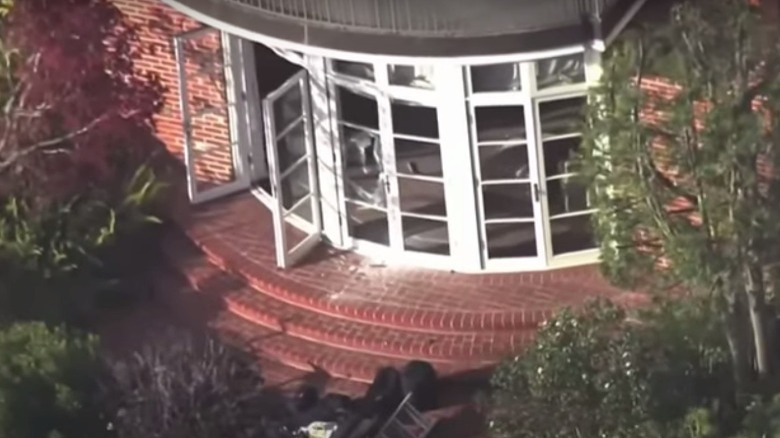The Charges Against Paul Pelosi's Attacker Explained
On the morning of October 28, America woke up to a startling news story: Paul Pelosi (above), the husband of Speaker of House of Representatives Nancy Pelosi, had been attacked by an intruder in his San Francisco home. Ms. Pelosi's spokesman said, in a press release, that Mr. Pelosi had been "violently assaulted," but was in the hospital and doing well. The Speaker was in Washington at the time.
Later in the day, news outlets began to report additional facts about the case. The Guardian's rolling coverage mentioned a number of Ms. Pelosi's Congressional colleagues who expressed their outrage at the attack, including prominent Republicans like Mitch McConnell and Kevin McCarthy. It was only at midday that details of the attack began to emerge, like the aerial footage of the Pelosi's back door, crudely broken in (via The Recount on Twitter). Slowly, the story began to emerge: A man had broken into the Pelosi house between 2 a.m. and 2:30 a.m., calling out "Where's Nancy?" The 82-year-old Mr. Pelosi confronted him, and police arrived in time to see Mr. Pelosi allegedly attacked with a hammer (via The New York Times).
Attempted homicide
The New York Times reported that David DePape, 42, of Berkeley, California, had been arrested by the San Francisco police, and would be charged with at least four serious felonies. A police spokesperson told the press that these would include attempted homicide, assault with a deadly weapon, burglary, and elder abuse, plus other charges to be announced later.
This could add up to a serious amount of prison time for DePape. According to the Shouse California Law Group, a law firm specializing in defense, attempted first-degree murder alone can put a defendant behind bars for life. In the case that the victim is a "protected person," the defendant would have to serve 15 years before parole could even be considered. "Protected persons" include on-duty police officers and firefighters, but could potentially include serving politicians. DePape's call of "Where's Nancy, where's Nancy?" will likely prove that his real target was the Speaker, not her husband, and could thus put his crime in this inauspicious category.
It's never been more dangerous
CNN notes that DePape was a known conspiracy theorist, whose social media accounts made it clear that he believed that COVID vaccines were part of a globalist conspiracy and that the Democratic Party had stolen the 2020 presidential election from its rightful winner, Donald Trump. Some of his posts were bizarre and incoherent, including a 2021 Facebook screed claiming that "Jesus is the anti christ" [sic].
DePape is possibly a very ill man, and not part of any grand conspiracy of the kind he writes about on Facebook. But The New York Times notes that life has never been more dangerous for members of Congress, especially after the January 6, 2021 riot at the U.S. Capitol. DePape shared a particular, obsessive hate of Speaker Peolsi with a number of the January 6 rioters, some of whom looted her office and insulted her on camera (via New York Post). Even DePape's mocking call, "Where's Nancy?," bears a chilling echo to the chant of "Hang Mike Pence" on January 6 (via The New York Times).
It seems depressingly clear that DePape's upcoming trial is bound to be a political event, more than a mere criminal trial. But politicians on both sides of the aisle are urging calm and civic goodwill. Republican Senator Ben Sasse of Nebraska told the Times that "every single American needs to be lowering the temperature ... Disturbed individuals easily succumb to conspiracy theories and rage — the consequences are bloody and un-American."


